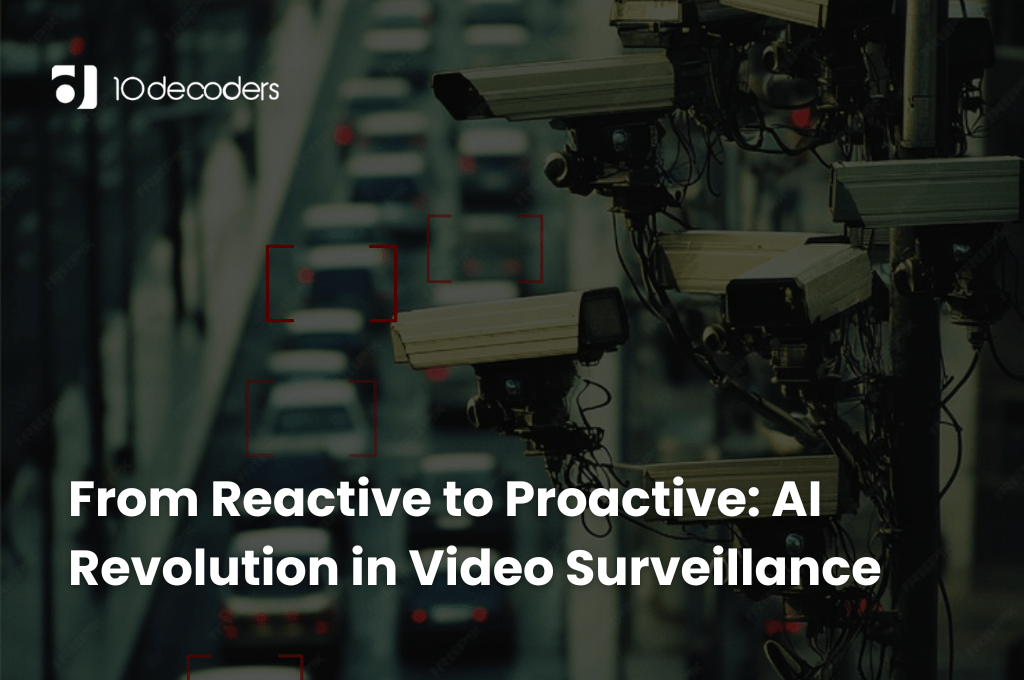From Reactive to Proactive: AI Revolution in Video Surveillance
Introduction
Traditional security systems have primarily been reactive, responding only after an incident occurs. An alarm might go off when a door is forced open, or a motion detector could pick up movement after business hours. While these measures help identify breaches, they do little to prevent them from happening in the first place.
AI-powered video surveillance is changing this dynamic, shifting security from a passive monitoring tool to an active defense mechanism. In this article, let us explore how artificial intelligence surveillance is making video surveillance smarter and more proactive
Real-Time Alerts for Immediate Action
Imagine a vehicle lingering near an entrance for too long or an unauthorized person accessing a restricted area. AI-driven surveillance systems analyze live video feeds, detecting unusual activity based on pre-set rules. Once a suspicious event is identified, immediate alerts are sent to security teams, enabling quick action before a situation escalates
Minimize False Alarms with Smart Filtering
False alarms caused by environmental factors like moving tree branches, passing animals, or shifting shadows can be costly and inefficient. AI-based surveillance systems minimize these errors by distinguishing between genuine security threats and benign motion. This not only prevents unnecessary disruptions but also ensures that alerts are more credible and warrant prompt responses
Faster Incident Investigation with AI-Powered Search
When an incident occurs, quickly retrieving relevant footage is crucial. Traditional video review requires manually scanning hours of footage, which is time-consuming and inefficient. AI simplifies this process by automatically tagging events based on movement, facial recognition, or unusual patterns. AI security cameras can filter footage by specific criteria, significantly reducing the time needed to investigate incidents.
Smart Vehicle Recognition for Secure Access Control
Managing vehicle access is another area where AI excels. License plate recognition (LPR) technology can identify and grant entry to authorized vehicles while flagging unknown or blacklisted ones. Security teams can use AI to create automated access lists, ensuring smooth operations for employees and visitors while preventing unauthorized entry.
Gain Actionable Insights with AI Video Analytics
Beyond security, AI video surveillance provides valuable insights that can improve operations. Smart video surveillance systems analyze video feeds to detect trends, such as crowd density in public spaces or employee movement patterns in warehouses. These insights help businesses optimize resource allocation, enhance safety protocols, and improve efficiency.
Facial Recognition for Enhanced Security Measures
Facial recognition technology has become a crucial part of AI-driven surveillance. AI can match faces against watchlists of known threats or authorized personnel, improving security at entry points. This capability is particularly useful in airports, corporate buildings, and public venues where identity verification is essential. AI security cameras can quickly identify individuals and notify security teams if an unauthorized person is detected
Predictive Security Through Behavioral Analysis
AI-powered surveillance systems can learn patterns of normal activity and identify deviations. This behavioral analysis enables predictive security, where potential threats are flagged before they escalate. For instance, if someone lingers in a restricted area for an unusually long time or exhibits suspicious movement patterns, the system can alert security personnel for immediate action.
Cloud-Based AI Surveillance for Remote Monitoring
Modern AI-based surveillance systems leverage cloud technology to enable remote monitoring. Security teams can access live feeds and recorded footage from anywhere, allowing for real-time decision-making even when they are offsite. Cloud-based storage also ensures that data is securely stored and can be accessed whenever needed.
IoT and AI Integration for Smarter Security Systems
AI surveillance is not limited to standalone cameras; it integrates seamlessly with Internet of Things (IoT) devices and other smart security systems. This connectivity allows AI-powered cameras to work alongside motion sensors, alarm systems, and access control devices, creating a comprehensive security ecosystem that responds dynamically to threats.
Automated Emergency Response and Law Enforcement Alerts
AI-powered surveillance systems can also be programmed to trigger automated emergency responses. If a threat is detected, the system can alert law enforcement, lock down entry points, or activate alarms automatically. This immediate response capability reduces human intervention and ensures that security breaches are handled promptly.
The Future of AI-Driven Video Surveillance
Artificial intelligence surveillance is redefining the role of video surveillance, turning it into an active security solution that not only records incidents but also predicts and prevents them. As AI technology continues to evolve, businesses can expect even more sophisticated security measures, tailored analytics, and seamless integration with broader security infrastructures.
Incorporating AI into surveillance is not just about monitoring—it’s about staying ahead of threats, improving response times, and making security smarter than ever before. With AI-driven advancements in facial recognition, predictive analytics, cloud integration, and IoT connectivity, AI security cameras are poised to become a critical part of modern security strategies, ensuring a safer and more efficient environment for all.



